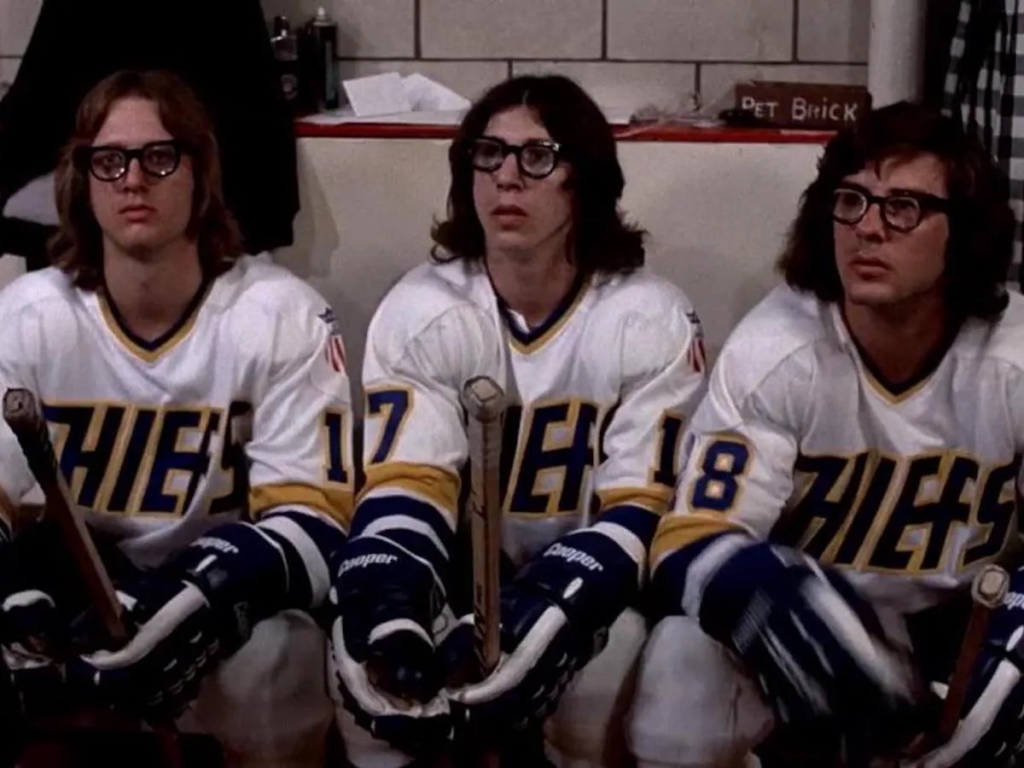Slap Shot’ (1977)

Slap Shot frequently claims the top spot when it comes to memorable sports movies, praised for its authentic depiction of hockey, unforgettable characters like the beloved Hansen Brothers (pictured), and Paul Newman’s stellar performance. Nevertheless, the film’s raw realism may have pushed the boundaries a bit too far. The excessive blood, violence, and the use of offensive language, including homophobic slurs, would undoubtedly be deemed unacceptable in today’s standards.
